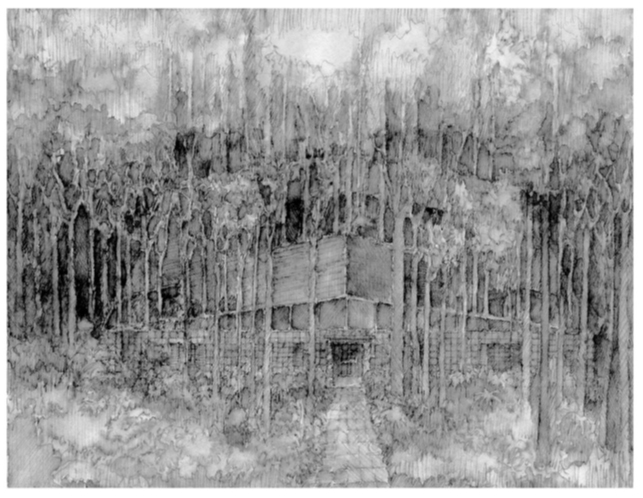the wines bottles he designed, turning them into a counterfigure of their precious contents.
In this amused flip of reality, there is a profound reflection not so much on critical and linguistic models, which are also constantly put into play. Rather, he seems to reflect on the fundamental paradigms of our culture and morals. The thought instinctively turns to Gulliver’s Travels (published in 1726) by Jonathan Swift, in which the novelist described a world dominated by Lilliputians, giants, mad mathematicians or horses. Moreover, a thought goes to the chilling and amused A modest proposal by the same author (1729).
Beneath the surface
It is well known that architecture and design have sometimes made fun of themselves. The Sicilian Villa of Palagonia, which horrified Goethe, gives the measure of a certain temptation towards a conscious grotesque. However, James Wines does not want to bring the grotesque to life in his designs. In fact, he wants to discover their hidden part, bring to the surface their secret relationship with reality.
The light bulb that gives the dark, while the lamp-holder lights up, is not an illusionist trick. It is the unveiling of the hidden order of things, the discovery of an “under” that beats vitally next to the “above.” It is the development of a strategy of knowledge which goes beyond the acquired knowledge. Whether this could give rise to an unexpected disorientation or a drastic repulsion, it must be taken into account.
In the project culture scene which prevails nowadays, this reversal of roles and point of view gives a more attentive and disenchanted look at the universe of the conceived and realized things. While architecture and design are increasingly aiming at a ritual and pointy technological monumentalism or abandonment to the flattery of art, Wines‘ research goes back to the origins of design, patiently scanning its hidden messages. It seems that he turned his back on science to return to alchemy, and from there to other and more promising routes.

Bedford House, rendering of a private home on a heavily forested site; overview of the “inside/outside” building, consumed by trees and regional vegetation, Bedford, CT Usa, ink and wash, 1984
JAMES WINES
Early years and education
James Wines, winner of the Smithsonian Institution’s 2013 National Design Award for Lifetime Achievement, is an architectural designer, visual artist, and writer. He is also a professor emeritus at Penn State University, with a teaching emphasis on the integrative arts.
Educated at Syracuse University, he is the founder (in 1970) of SITE New York – a multi-disciplinary practice that includes buildings, public spaces, master plans, landscapes, environmental art works, interiors, exhibition designs, video productions, graphics, and product designs.
Commissions and recognitions
The main focus of his work is on aesthetic, sociological and environmental concerns in the







